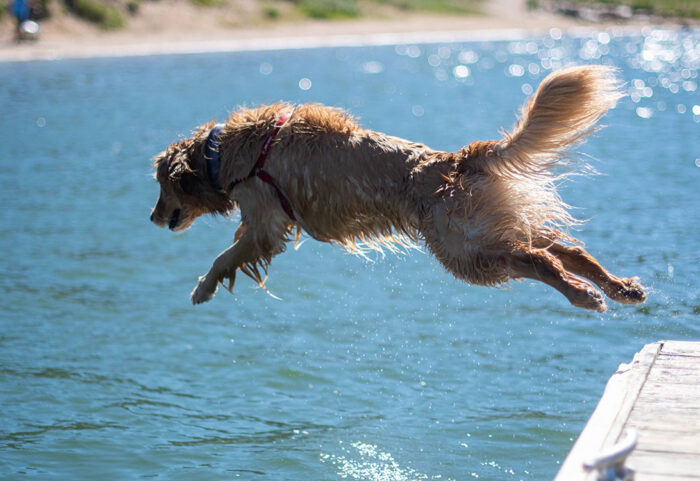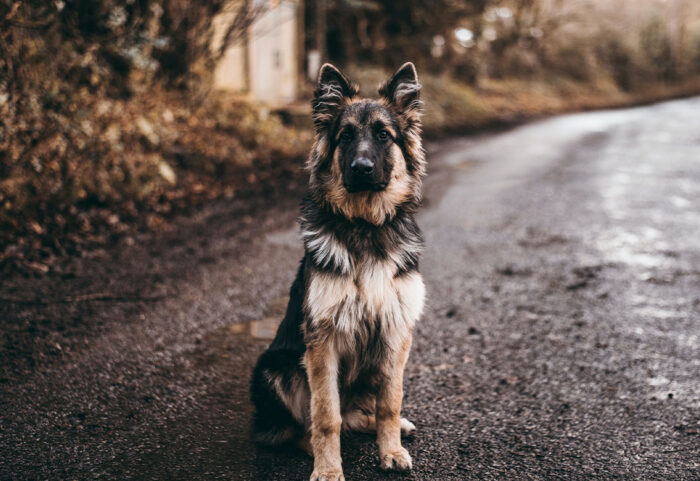First 2 Hours: My Dog Had a Bloody Bowel Movement
How often are you looking at your dog’s poop? Probably not often enough! Fecal matter is actually a great indicator of health. Your dog’s stool can tell you a lot about how he’s feeling, whether his food agrees with him, and even whether he’s got an undiagnosed health issue you aren’t aware of. One of the most worrying poop anomalies is a bloody bowel movement. If you suddenly notice blood in your dog’s stool, here’s what to do for the next two hours and after.
0-30 minutes in: Collect a Sample
Bloody stool almost always necessitates a visit with a vet. The best thing you can do to help your vet understand the extent of the issue is to collect a stool sample. Ideally, the stool will be somewhere relatively contained (i.e. not in muddy soil) so that it’s as uncontaminated as possible. Before collecting the stool, put on protective gloves in case the cause is viral or parasitic. Use a clean plastic spoon, if you have one, or another clean implement that can be thrown away. Scoop as much poop as you can into a small, clean airtight container then seal and label with the time and date. No need to refrigerate until you talk to your vet. Wash your hands thoroughly!
30 minutes – 1 hour in: Call the Vet
Bloody stool isn’t an “emergency” unless it’s accompanied by other worrying symptoms like vomiting, lethargy, or extreme pain. Call your veterinarian and explain the situation; they’ll likely remind you to collect a stool sample for testing and schedule an appointment as soon as possible. Whether the bloody stool is one-and-done or constant, wiping your dog’s rear end and tail with a baby wipe after each session can help you keep from contaminating your home. Discontinue use if your dog’s anus becomes raw or irritated or if you notice “hot spots” developing. And of course, be gentle! Your dog’s bum is probably pretty sore.
1 hour – 2 hours in: Watch Your Pooch
In preparation for your vet appointment, it’s smart to take a few notes they might find relevant. Jot down anything unusual about your dog’s behavior – eating grass, rubbing his bottom on the ground, sudden aversion to food – and of course, note whether or not your dog is or has been eating anything out of the ordinary. Also take notes on the bowel movement itself. Was there anything other than blood (like streaky mucus?) that stood out with the stool? Was there less or more volume than normal? Was the stool a different consistency? Did it seem like your dog was straining or in pain? These notes can be helpful for your vet in diagnosing the issue. What causes bloody stool in dogs? Lots of things! Some are innocuous and some require medical attention, medication, and in severe cases, even surgery. A few of the most common reasons your dog might have a bloody stool include:
-
- Viral infection (like parvovirus)
- Bacterial infection/inflammation
- Intestinal foreign body (i.e. he ate a sock)
- IBS/Colitis
- Cancer
- Severe upset stomach from “bad” food
The good news is, a bloody stool is nothing to panic about off the bat. Heed your vet’s advice on collecting and storing a stool sample; they’ll likely use it to do run a few preliminary diagnostic tests. Depending on the results, you may need to take additional samples down the road. Be sure to pay close attention to your dog’s stool for a few weeks, even if his bloody bowel movement appears to be a one-time thing.
Pup not spayed or neutered yet? Plan for the unexpected with stem cell banking.


